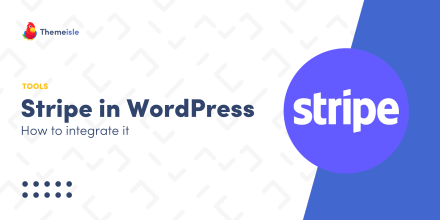Nathan Wrigley welcomes Seth Rubenstein, head engineer at Pew Research Center, to discuss block composability and how it’s shaping WordPress. Seth leads a team managing Pew’s WordPress publishing platform and contributes to Gutenberg, aiming to open source work so it benefits the wider community.
Seth defines composability as creating modular, reusable components that can be assembled into web applications—think React components but inside the block editor. He argues Gutenberg has moved beyond static blocks (paragraphs, images) to blocks that do things and communicate with each other. That shift enables building interactive experiences—quizzes, calculators, pivot tables—directly inside the block editor without separate custom front ends.
Seth describes Pew’s Quiz Builder: editors create quizzes using a quiz post type and blocks such as a quiz controller, question blocks, and answer blocks. Answers can contain text, images, charts, videos, or other interactive content. Blocks can change behavior based on surrounding blocks—adding a scoring block can alter quiz scoring behavior without overwriting core functionality. For editors, the experience is drag-and-drop simple.
Three recent API developments enabled these capabilities:
1. Block Bindings API
– Lets developers use core blocks more effectively by binding attributes to programmatic sources.
– Example: Instead of making a custom “answer text” block, Pew binds a core paragraph’s content attribute to their answer block so the paragraph functions as layout while the content is supplied programmatically. This reduces the number of custom blocks and interface clutter, making blocks more extensible and simpler for editors.
– Documentation and tutorials exist; it’s approachable for developers.
2. Block Bits (concept / in-development)
– Sub-block bindings: change or bind small parts inside a block’s content—down to words or characters—so you can swap a name, ISBN, currency symbol, or embed a link/popup for an ISBN inside a sentence.
– Useful for templating: rather than inserting multiple blocks for metadata (date, title, type), Block Bits would allow a single line containing dynamic pieces.
– Still conceptual and depends on HTML API progress, but basic experiments can be done today using rich text custom formats and the HTML Tag Processor to swap class-marked spans into dynamic content.
3. Interactivity API
– A WordPress-native Preact-based framework enabling blocks to run JS on the front end and share state.
– Allows atomic interactions: a form block can accept different submit handlers depending on nested blocks; blocks can hoist state into a shared data model.
– Pew rebuilt Quiz Builder to use the Interactivity API: previously they duplicated React front ends and server-side processing; now the interactivity and scoring happen client-side, improving performance and reducing server load.
– Interactivity supports prefetching and caching—for example, query loop and pagination use an Interactivity prefetch so hovering can load the next page, making clicks instantaneous.
Underlying these is the HTML Tag Processor, which processes HTML and swaps in dynamic pieces very efficiently—much faster and more suitable than older PHP DOM approaches.
Performance
– These APIs, particularly Interactivity built on Preact and the HTML Tag Processor, can improve performance versus custom React front ends. Client-side handling, prefetching, and caching reduce server work and speed user experience. Pew uses prefetch/caching for heavy datasets (large chart queries), fetching data on hover and serving it instantly on click.
Developer and editor tooling
– Currently these are developer APIs; developers build the tools and UIs to surface them to editors. But panels and UI elements already exist: Block Bindings shows an attributes panel for selecting values to bind; Pew built an Interactivity panel showing allowable connections in a block hierarchy.
– There’s a clear opportunity for plugin authors to create higher-level UIs—analogous to Advanced Custom Fields—that let non-developers configure bindings, bits, and interactions visually. Automattic’s Remote Data Blocks is an early example: it creates blocks and bindings from remote data sources (Google Sheets, Airtable, Shopify, HTTP endpoints) and provides a UI for mapping data into blocks.
Missing pieces and future work
– Device-contextual or responsive attributes remain a gap. Seth highlights the need for responsive blocks where attributes change by viewport (desktop/tablet/mobile). Example: a three-column grid where the middle column moves to full width on tablet; or changing button behavior on mobile (open native share) versus desktop.
– The APIs exist in parts, but consistent guidance, patterns, and finished tooling for responsive attributes and device contextuality are needed to make Gutenberg truly seamless for those use cases.
Broader view
– WordPress is evolving into a web application framework within the block editor: creators can build calculators, interactive quizzes, and data-driven apps by dragging and dropping blocks. For developers, the ecosystem can produce products that hide complexity and present simple drag-and-drop tools to editors.
– Seth encourages experimentation and contributions. He sees a big opportunity for plugin authors to build UIs and templates that make these composable features accessible to non-developers.
Where to find Seth
– Seth’s site: sethrubenstein.info. He’s on social platforms (Twitter, Bluesky) and encourages people to reach out and experiment with the APIs.
Nathan concludes that the promise hinted at when Gutenberg first appeared is becoming reality: 2025’s Gutenberg can host interactive web apps natively. He urges developers to explore Block Bindings, Block Bits concepts, Interactivity API, and related tools to shape the next phase of WordPress.




